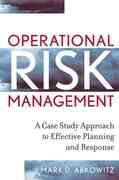Question
Auditing and Assurance (ACC3AUD) . 1 Performance reviews are not relevant to internal controls are only applicable to the chief executive officer in an organisation
Auditing and Assurance (ACC3AUD)
. 1
Performance reviews
are not relevant to internal controls
are only applicable to the chief executive officer in an organisation
are part of control activities
can include financial data only
none of the alternatives
Q. 1
For purchasing inventory transactions, an example of a risk arises:
goods that have been sold and invoiced are included in the inventory on hand
the wrong quantities are recorded during stocktake
the wrong labour costs are added to the cost of the individual inventory item
the wrong amount is paid against an invoice
none of the alternatives
Q. 11
Which of the following is NOT a method of collecting evidence?
observation
enquiry
disclosure
analytical procedure
Re-calculation
Q. 13
A letter sent directly by the auditor to a third party asking the third party to respond whether they agree with the information in the auditor's letter is a:
negative confirmation letter
representation letter
external confirmation
positive confirmation letter
none of the alternatives
Q. 15
Which of the following relates to the audit assertion of cut-off?
all sales that have occurred have been included in the current period
all transactions relating to sales and sales adjustments have been recorded appropriately
sales from next income year are not included in the current period
all sales transactions have been recorded in the proper accounts
none of the alternatives
Q. 19
When an auditor uses the work of an expert, who has the responsibility for arriving at an overall conclusion regarding the truth and fairness of a client's financial report?
the auditor
the expert
the client's management
the client's audit committee
board of directors
Q 2
Which of the following is not an assertion used for transaction and events?
cut-off
existence
classification
occurrence
none of the alternatives
Q. 20
When testing for accuracy, an auditor searches for evidence:
to verify that a recorded transaction or event took place and relates to the entity
that all disclosures that should have been included in the financial report have been included
that transactions and events have been recorded at appropriate amounts
to verify that recorded assets are owned by the entity
none of the alternatives
Q. 4
Which of the following factors is most important in determining the appropriateness of audit evidence?
the reliability of the evidence in meeting the audit objective
the sampling method used by the auditor
the quantity of the evidence obtained
the objectivity of the auditor gathering the evidence
none of the alternatives
Q. 6
Which of the following is an example of a situation where an auditor may use the work of an expert?
a geologist engaged to evaluate the quantity and quality of mineral deposits
an actuary engaged to verify insurance premiums
a registered engaged to provide an opinion on the value of a client's property
a vintner engaged to assess the quality and value of wine stocks
all of the alternatives
Q. 7
Which of the following is NOT a financial report assertion?
inspection
rights and obligations
valuation and allocation
existence
cut-off
Q. 8
The first stage when an auditor considers the use of an expert is:
assessing the objectivity of the expert
assessing the need to use an expert
assessing the expert's report
determining the scope of the work to be carried out
none of the alternatives
Q. 9
If controls are in place to ensure that transactions are recorded in the correct accounting period, this satisfies which internal control objective?
timely
real
valued
posted
none of the alternatives
Q. 12
The occurrence assertion means that all transactions, events, assets, liabilities and equity items that should have been recorded have been recorded.
True
False
Q. 14
If the auditor believes that the client's system of internal control is not operating effectively they will adopt a lower assessed level of control risk approach.
True
False
Q. 16
The concept that no one employee should be in a position both to perpetrate and hide errors or fraud in the normal course of their duties is known as segregation of incompatible duties.
True
False
Q. 17
Checklist and preformatted questionnaires are particularly helpfulin industries that the auditor may not personally be familiar with auditing.
True
False
Q. 18
The internal control objective of 'real' refers to controls in place to ensure that fictitious or duplicate transactions are not included in the books and records of the organisation.
True
False
Step by Step Solution
There are 3 Steps involved in it
Step: 1

Get Instant Access to Expert-Tailored Solutions
See step-by-step solutions with expert insights and AI powered tools for academic success
Step: 2

Step: 3

Ace Your Homework with AI
Get the answers you need in no time with our AI-driven, step-by-step assistance
Get Started


